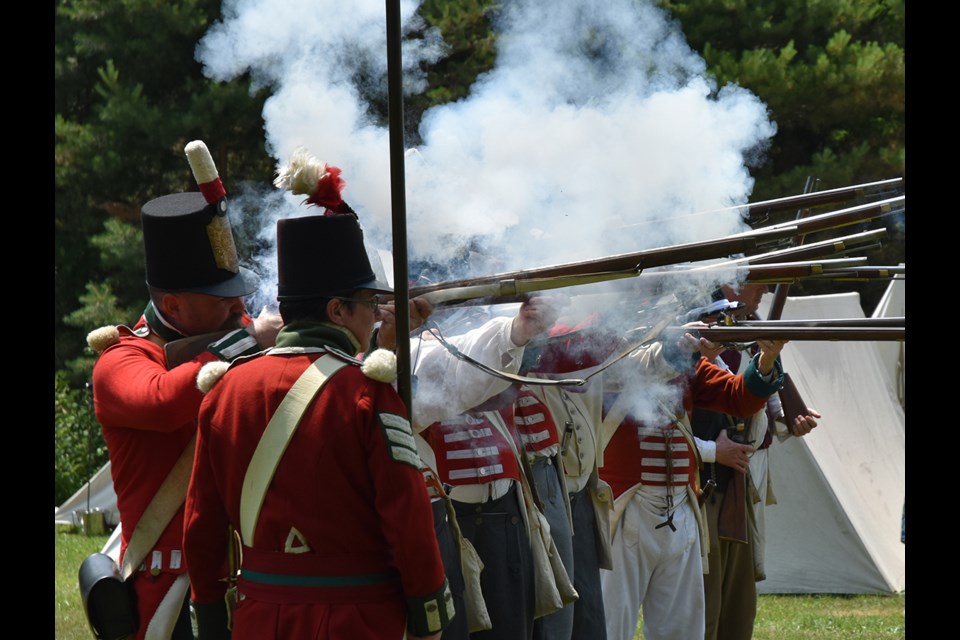Patriots? Or rebels?
In 1837, a group of reformers — many of them farmers struggling with crop failure, heavy taxation and unfair land policies — rose up under William Lyon Mackenzie.
Calling for the introduction of democratic reforms, about 700 supporters marched to Montgomery’s Tavern in Toronto.
Among those joining the Rebellion of 1837 were members of Children of Peace, the break-away Quaker sect founded by David Willson, which built the Sharon Temple in the 1820s.
The 10th annual Canada Day celebration at the Sharon Temple National Historic Site, supported by the Town of East Gwillimbury and Canadian Heritage’s Celebrate Canada program, included historic games and children’s activities, a charity barbecue, live music — and a lively re-enactment of the rebellion and skirmish at Montgomery’s Tavern.
Jim Marshall, a descendant of David Willson, noted that the Sharon area was “the heartland of the Rebellion of 1837.”
William Lyon Mackenzie was its elected representative, and Willson’s sons and son-in-law participated in the uprising.
Red-coated re-enactors marched on the rag-tag group of rebels, firing volleys with their muskets — as the rebels fired back, defiantly shouting, “We’re patriots!”
As in 1837, they fled before the advancing Loyalists.
There were friendlier political overtones at the Canada Day celebration, as MP for York-Simcoe Peter Van Loan joined East Gwillimbury Mayor Virginia Hackson, councillors Joe Persechini and Tara Roy-DiClemente, and MPP Caroline Mulroney, to welcome visitors to Canada’s 151th birthday and serve up birthday cake.
“People came seeking freedom, opportunity and democracy — and they found it,” said Van Loan. “It remains the country that Sir John A. Macdonald and the Fathers of Confederation built.”
But back in 1837, the Family Compact dominated land ownership and held political control in Upper Canada through a system of patronage that favoured Church of England supporters over other religious denominations, and denied land grants to Protestants and the United Empire Loyalists who fled the U.S. revolution.
Armed with pitchforks, staves and hunting rifles, the reformers marched on Toronto, making their stand at Montgomery’s Tavern — only to be driven back by a small force of fewer than 30 Loyalists, and then routed entirely by an army of volunteers.
Two rebels and one Loyalist were killed in the skirmishing, but many other rebels, including Samuel Lount and Peter Matthews, would be executed as traitors, or imprisoned.
Mackenzie and about 200 supporters fled to the United States, and continued to mount border raids in a so-called Patriot War before finally being defeated in 1838.
The rebellion ultimately failed — yet, in the end, it has been described by some as the starting point for Canada’s democracy.
As The Canadian Encyclopedia noted: “Although the rebellion itself failed, yet its very failure helped pave the way for a more moderate and careful political change in British North America.”
And William Lyon Mackenzie eventually returned — to serve as an elected representative in the legislature from 1851 to 1858.



